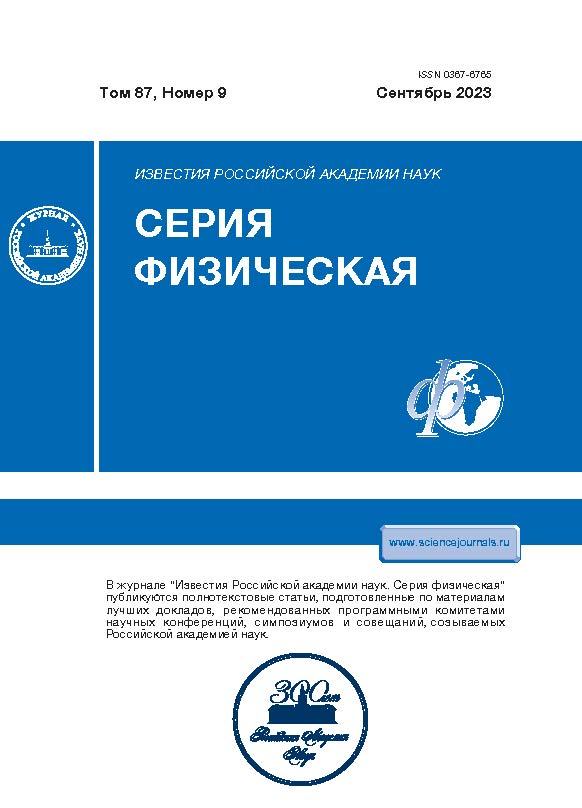Dependence of the relaxation properties of polypropylene solutions on the concentration of organic solvents: molecular dynamics simulation
- Autores: Egorov V.I.1, Maksimova O.G.1
-
Afiliações:
- Cherepovets State University
- Edição: Volume 87, Nº 9 (2023)
- Páginas: 1316-1321
- Seção: Articles
- URL: https://rjeid.com/0367-6765/article/view/654615
- DOI: https://doi.org/10.31857/S0367676523702319
- EDN: https://elibrary.ru/JWEZNM
- ID: 654615
Citar
Texto integral
Resumo
The microscopic relaxation of polymer chains in organic solvents has been studied by the molecular dynamics method. The simulation was carried out for the mixtures of polypropylene with three different organic solvents (acetone, cyclopentane, acetonitrile). The dependence of the relaxation time and the glass transition temperature of the polymer on the mass fraction of the solvent is obtained.
Sobre autores
V. Egorov
Cherepovets State University
Autor responsável pela correspondência
Email: rvladegorov@rambler.ru
Russia, 162600, Cherepovets
O. Maksimova
Cherepovets State University
Email: rvladegorov@rambler.ru
Russia, 162600, Cherepovets
Bibliografia
- Sur S., Rothstein J. // J. Rheol. 2018. V. 62. No. 5. P. 1245.
- Egorov V., Maksimova O., Andreeva I. et al. // Phys. Fluids. 2020. V. 32. No. 12. Art. No. 121902.
- Di Lorenzo M.L., Longo A.N. // Thermochim. Acta. 2019. V. 677. P. 180.
- Booth C., Price C. Comprehensive polymer science. V. 2. Pergamon, 1986. 657 p.
- Lipson J.E.G., Milner S.T. // J. Polym. Sci. B. 2006. V. 44. No. 24. P. 3528.
- Du F., Schick C., Androsch R. // Polymer. 2020. V. 209. Art. No. 123058.
- Peter S., Meyer H., Baschnagel J. // Eur. Phys. J. E. 2009. V. 28. No. 2. P. 147.
- Götze W., Voigtmann T. // Phys. Rev. E. 2003. V. 67. No. 2. Art. No. 021502.
- Gor G. Y., Cannarella J., Leng C.Z. et al. // J. Power Sources. 2015. V. 294. P. 167.
- Yan S., Xiao X., Huang X. et al. // Polymer. 2014. V. 55 No. 24. P. 6282.
- Rofika R.N.S., Honggowiranto W., Jodi H. et al. // Ionics. 2019. V. 25. P. 3661.
- Logan E., Tonita E.M., Gering K. et al. // J. Electrochem. Soc. 2018. V. 165. Art. No. A21.
- Lagadec M.F., Zahn R., Wood V. // Nature Energy. 2019. V. 4. P. 16.
- Brodka A., Zerda T. // J. Chem. Phys. 1996. V. 104. P. 6313.
- Muñoz-Muñoz Y.M., Guevara-Carrion G., Llano-Restrepo M., Vrabec J. // Fluid Phase Equilib. 2015. V. 404. P. 150.
- Mountain R.D. // J. Phys. Chem. C. 2013. V. 117. No. 8. P. 3923.
- Pütz M., Curro J.G., Grest G.S. // J. Chem. Phys. 2001. V. 114. No. 6. P. 2847.
- Buchholz J., Paul W., Varnik F., Binder K. // J. Chem. Phys. 2002. V. 117. P. 7364.
Arquivos suplementares













